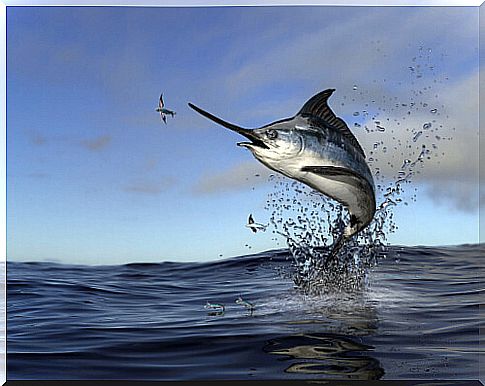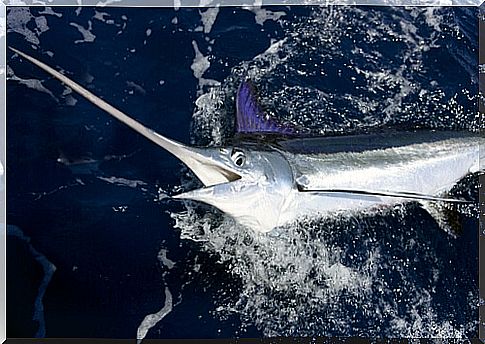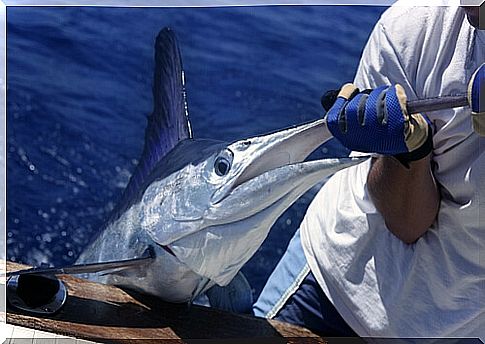Swordfish: Care And Diseases

Swordfish, scientifically known as Xiphias gladius , is one of the most easily recognizable marine species due to its morphology. However, when it comes to their care and illnesses, they go more unnoticed.
Main characteristics of swordfish
Without a doubt, the defining trait of swordfish is the morphology of its sword , located at the top of its jaw. Unlike other billfish that have a cylindrical section on their sword, that of Xiphias gladius is characterized by being very long and with a flattened and oval profile.
Although commercial catches are between one and two meters in length, commercial specimens can reach four meters and exceed 500 kilograms, and it is the females that present the largest dimensions. In addition, they are distinguished by not presenting pelvic fins or scales once they reach the adult stage.
Swordfish reach sexual maturity between the second and fourth year of life, a period in which the males court the females by swimming around them until they fertilize the thousands of eggs that they lay in successive clutches. Normally, the reproduction and the birth of the young takes place during the months of June to September in warm waters.

Swordfish are characterized by having great tolerance to temperature variations, hence their wide geographic distribution in both latitude and depth. Normally, they frequent areas with significant ocean currents, approximately between 45º north and 45º south.
Food and care
Swordfish stand out for feeding on a large number of prey and, normally, the high concentrations of this species coincide with the abundance of mackerel, horse mackerel, anchovies, squid, octopus and, to a lesser extent, crustaceans and other invertebrates. Hence the responsibility of fishermen to carry out responsible fishing practices with marine diversity.
In addition, it stands out for being a very active predator, which is guided mainly by the sense of sight to make its captures. However, it also has several threats, among which sharks, killer whales or large cephalopods stand out.
Regarding the national and international regulations on the fishing activity of this species, the decision of the UN in 1990 to regulate and limit the use of drift nets greater than 2.5 kilometers, and the prohibition of their use in Spain for tuna and swordfish fishing. In 2002 the EU regulated the ban on drifting gillnets.

Diseases
In addition to having associated symbiote fauna, especially several species of remoras, notably Remora brachyptera , swordfish is susceptible to the presence of a large number of parasites. These are usually linked to their gills, viscera, abdominal cavity or muscle and, mainly, trematodes, tapeworms, nematodes and copepods stand out.
As documented by fishermen, due to the ease of its identification, the most frequent ectoparasite is the one belonging to the genus Pennella. With a blackish tubular appearance, and with a plume at one end, it is capable of passing through the musculature until it reaches the most vascularized layers from which it is nourished. The presence of this parasite is greater in the Mediterranean Sea, and there may be several of these in the same specimen.
In recent years, the alarm has been raised, mainly due to its direct involvement in humans: the accumulation of mercury (in the form of methylmercury) in the tissues of this and other marine species.
Said metal is toxic to the cardiovascular system, kidneys and nervous system when it is found in relevant quantities. And since swordfish is one of the top predators in the food chain, there is a possibility that it is contaminated, posing a risk to the consumer.









